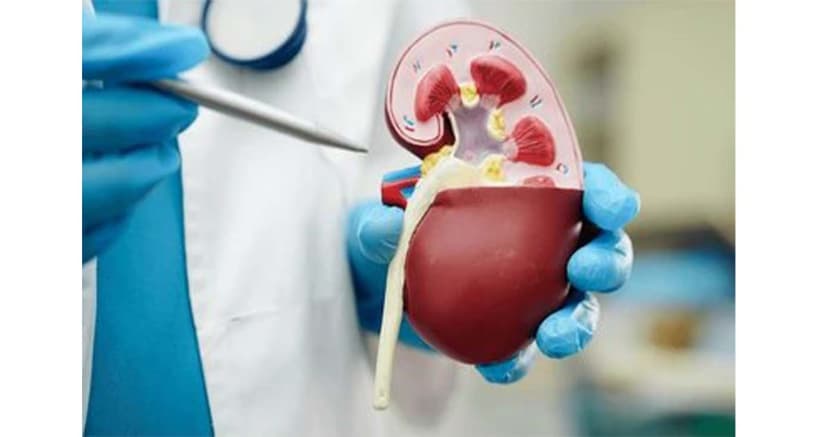How Robotic Surgery is Revolutionizing Patient Care
By:

Apex Hospitals
05-11-2024

In the past few decades, the surgery field has dramatically transformed. One of the most groundbreaking advancements in recent years has been the introduction of robotic surgery. With the integration of advanced robotic systems into medical procedures, surgeries that once required large incisions, long recovery times, and significant risks have become more precise, less invasive, and quicker, ultimately improving patient outcomes. Robotic surgery is revolutionizing patient care, making procedures safer and more efficient, and enhancing the overall experience for patients.
1. Minimally Invasive, More Efficient Surgeries
One of the most significant advantages of robotic surgery is that it allows surgeons to perform procedures through smaller incisions, often as tiny as a few millimetres. This means less trauma to the body, which results in less pain, minimal scarring, and a much shorter recovery time. Apex Hospitals uses a Make-in-India robotic system, SSI Mantra, which enables our surgeons to operate using tiny robotic arms equipped with specialized tools, making it possible to access hard-to-reach areas in the body.
Small incisions also mean less blood loss during surgery and a reduced risk of infection, which are common complications in traditional open surgeries. Patients experience less post-operative pain, translating to a faster and more comfortable recovery.
2. Increased Precision and Control
One of robotic surgery's most notable features is its increased precision. Robotic systems come equipped with high-definition 3D cameras and advanced optics, giving surgeons an incredibly detailed view of the surgical area. This precision is essential in complex procedures where accuracy is critical, such as cancer, urological, or gastrointestinal operations.
With robotic arms, surgeons can make excellent, controlled movements, minimizing the risk of errors that might arise from human limitations like tremors or restricted motion. These enhanced capabilities enable surgeons to perform even the most intricate procedures with greater confidence and success.
3. Enhanced Surgical Outcomes
The use of robotic systems has been linked to better surgical outcomes in a variety of medical specialties. In cancer surgeries, for example, robotic systems allow for greater precision in removing tumours while preserving surrounding healthy tissue. The ability to operate with such accuracy has been shown to improve the rates of cancer-free survival in certain cancers, such as prostate cancer.
Similarly, in urology and gastrointestinal surgeries, robotic systems can help remove tumours or perform organ resections with fewer complications. Studies have also demonstrated that robotic surgery can lead to fewer surgical site infections, less blood loss, and faster recovery times.
4. Faster Recovery Times
Traditional surgeries often require extended hospital stays and extensive recovery periods. In contrast, robotic surgeries typically involve shorter hospital stays and quicker recoveries. Since the incisions are smaller and there is less trauma to the body, patients can often return to their normal activities much sooner than they would after traditional surgery. Patients can sometimes be discharged on the same day depending on the procedure.
This reduction in recovery time benefits the patient and healthcare systems by reducing hospital costs and the burden on medical facilities.
5. Reduced Risk of Human Error
While human skill is a critical component of every surgery, robotic systems minimize the risk of human error by enhancing the surgeon’s capabilities. These systems offer motion scaling features, allowing the surgeon to control the robotic instruments with increased stability and reduced tremors. Surgeons can perform highly complex procedures with greater control, even in the most challenging environments, such as when operating on patients with multiple medical conditions or hard-to-reach anatomical areas.
Moreover, robotic surgery enables surgeons to perform procedures remotely, which can be especially helpful in providing access to care in remote or underserved locations. This flexibility helps reduce the potential for complications during surgery, leading to better patient safety and outcomes.
6. Better Visualization
Robotic surgery systems come equipped with high-definition 3D cameras that give the surgeon a magnified view of the operating area. This enhanced visualization allows for more accurate decision-making during surgery. For instance, when performing procedures like kidney or gastrointestinal, surgeons can see the intricate structures of organs, blood vessels, and tissues more clearly than in traditional open surgeries.
This added detail ensures surgeons can avoid damaging critical structures and operate more efficiently. The improved visual technology also helps assess the success of the surgery in real-time, leading to better outcomes.
7. A Future-Oriented Approach to Medicine
The ongoing advancements in robotic technology and artificial intelligence are continuously improving the capabilities of robotic surgery. Innovations such as artificial intelligence (AI) and machine learning enable robots to assist surgeons by predicting complications, providing real-time feedback, and even performing specific tasks autonomously. This makes robotic surgery even more efficient and could further enhance surgical outcomes in the future.
As technology evolves, robotic surgery will likely become a standard practice across many specialties, offering better care, better outcomes, and an enhanced patient experience.
Conclusion
Robotic surgery is undoubtedly revolutionizing how surgeries are performed, leading to faster recovery times, more precise procedures, and improved patient outcomes. With its ability to reduce human error, provide better visualization, and offer minimally invasive options, robotic surgery is profoundly reshaping the future of patient care. As technology advances, the potential for robotic surgery to further enhance the quality of medical treatments grows, providing patients with more effective and less invasive surgical options than ever before.
Incorporating robotic surgery into clinical practice enhances the quality of care. It promises a future where surgeries are safer, faster, and less taxing on the body, ensuring a more comfortable and practical experience for patients worldwide.
FAQS
Related Articles
Connect With Us
Health In A Snap, Just One App.
KNOW MORE



































































































